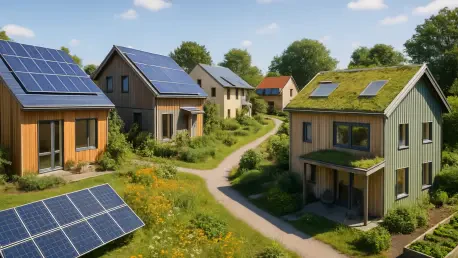I’m thrilled to sit down with Luca Calaraili, a renowned expert in construction, design, and architecture, whose passion for innovative technology applications has reshaped the industry. Today, we’re diving into a fascinating project by Thakeham, a leading housebuilder in the south of England, which recently secured planning permission for a new development in Horndean. Our conversation will explore the unique aspects of this landscape-led scheme, from its focus on sustainability and zero carbon readiness to its commitment to affordability and community integration. We’ll also discuss how this project balances environmental considerations with the pressing need for housing in the region.
Can you share some insights into what makes Thakeham stand out as a housebuilder in the south of England?
Absolutely. Thakeham has built a strong reputation for delivering high-quality, sustainable developments that prioritize both community and environment. What sets them apart is their holistic approach—they’re not just building houses, but creating places where people can thrive. Their focus on innovative design, like the zero carbon ready homes in Horndean, and their commitment to extensive community consultation shows how they go beyond the basics to address local needs and aspirations.
What can you tell us about the overall vision for the Land East of Catherington Lane project in Horndean?
The vision for this site is to create a sustainable, integrated community that feels like a natural extension of the village. It’s about building up to 109 homes, ranging from one to four bedrooms, to cater to a wide variety of residents. The project isn’t just about numbers, though—it’s designed to blend seamlessly with the surrounding landscape while addressing the acute housing shortage in East Hampshire, where thousands are on waiting lists.
How does this development tackle the issue of affordability for potential residents?
Affordability is a cornerstone of this project. Out of the 109 homes, 44 are designated as affordable, which equates to a 40% provision. This aligns with local planning policies and ensures that a significant portion of the development is accessible to people who might otherwise struggle to find suitable housing. It’s a mix of tenures, too, so it caters to different financial situations, making homeownership or renting a viable option for more families.
The term ‘zero carbon ready’ has been used to describe these homes. Can you unpack what that means in practical terms?
Zero carbon ready is about future-proofing these homes to minimize their environmental footprint. Each property will come equipped with features like air source heat pumps, electric vehicle chargers, and PV solar panels. These technologies drastically cut down carbon emissions, going well beyond what current building regulations require. It’s a proactive step to ensure residents can live sustainably without needing major retrofits down the line as energy standards tighten.
This project has been called ‘landscape-led.’ How does that philosophy shape the development?
Being landscape-led means the natural environment drives the design. Here, it’s about creating a sustainable edge-of-village community that respects and enhances the existing surroundings. A huge part of the site—17.9 acres in the northern section—will be transformed into green public open space for leisure and recreation. This not only preserves the green gap between Horndean and Catherington but also prioritizes outdoor access for residents, fostering a connection to nature.
What specific measures are in place to enhance outdoor recreation and connectivity for the community?
The project places a big emphasis on outdoor living. There will be new play spaces scattered throughout the development to encourage kids and families to spend time outside. On top of that, multiple pedestrian access points to the green spaces and dedicated cycling and pedestrian links are planned. These features improve connectivity within the site and to nearby areas, making it easier for residents to walk or bike rather than rely on cars.
Can you elaborate on the environmental strategies, particularly around biodiversity, in this scheme?
One of the standout environmental goals here is achieving a biodiversity net gain of over 10%. This means the development will leave the local habitat in a better state than before construction started. Thakeham is doing this through thoughtful landscaping, planting a significant number of new trees, and preserving natural areas. It’s a way to ensure that wildlife thrives alongside the new community, balancing human needs with ecological health.
Looking ahead, what is your forecast for the future of sustainable housing developments like this one in the UK?
I think we’re on the cusp of a major shift. Projects like Horndean are setting a benchmark for what housing can and should be—sustainable, community-focused, and environmentally conscious. As regulations tighten and public demand for green living grows, I expect to see zero carbon readiness and biodiversity net gain become standard, not exceptional. Technology will play a bigger role, too, with smarter, more efficient building methods. The challenge will be scaling these innovations affordably, but I’m optimistic that the industry is moving in the right direction.









